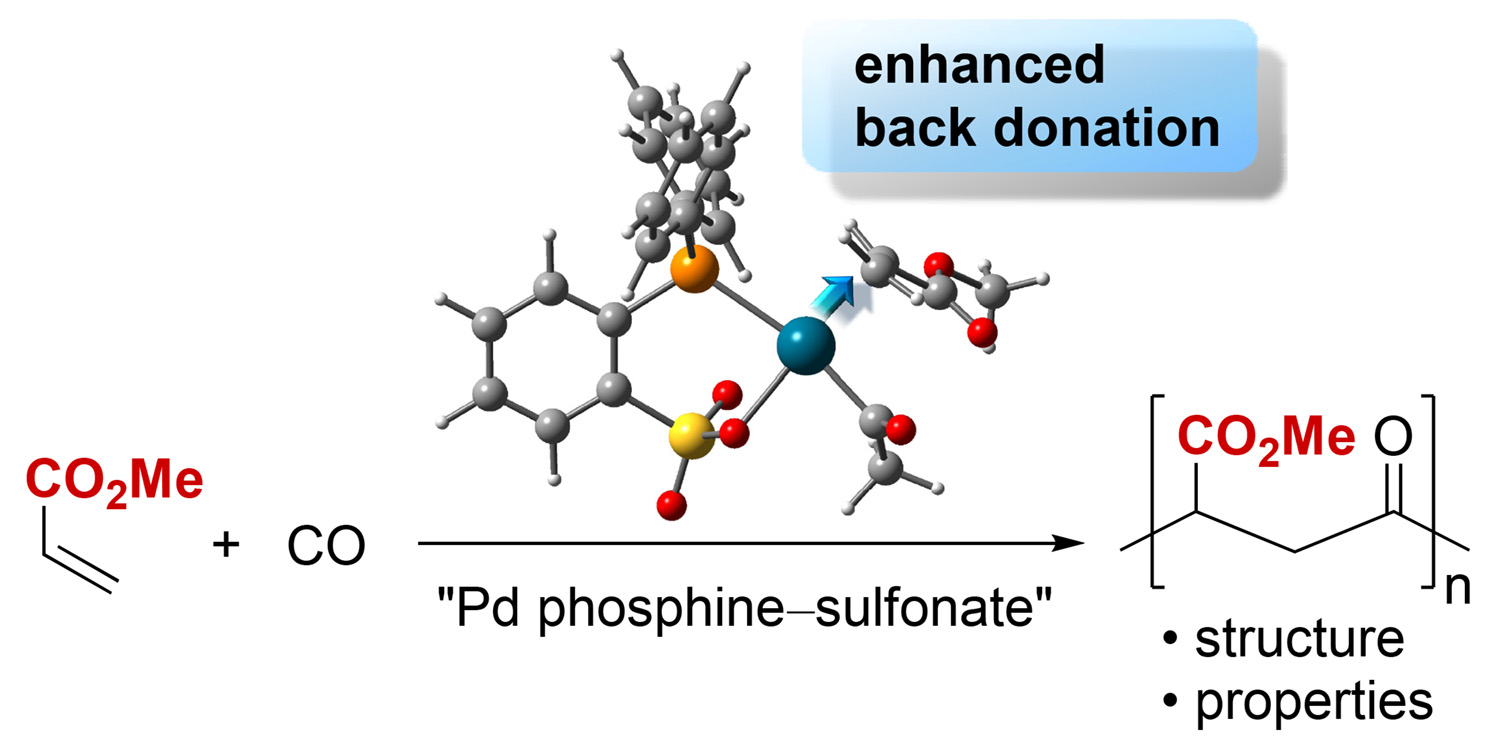A. Nakamura, K. Munakata, S. Ito, T. Kochi, L. W. Chung, K. Morokuma*, K. Nozaki*
J. Am. Chem. Soc. 2011, 133, 6761–6779. DOI: 10.1021/ja2003268
Abstract: Full details are provided for the alternating copolymerization of acrylic esters with carbon monoxide (CO) catalyzed by palladium species bearing a phosphine−sulfonate bidentate ligand. The copolymer of methyl acrylate (MA) and CO had complete regioregularity with stereocenters that slowly epimerize in the presence of methanol. In the presence of ethylene, terpolymers of MA/ethylene/CO were also prepared. The glass transition temperatures of the co- and terpolymers were higher than that of the ethylene/CO copolymer. Both experimental and theoretical investigations were performed to clarify the superior nature of the palladium phosphine−sulfonate system compared to an unsuccessful conventional palladium diphosphine system: (i) The reversible insertion of CO was directly observed with the isolated alkylpalladium complexes, [{o-((o-MeOC6H4)2P)C6H4SO3}PdCH(CO2Me)CH2COMe], whereas it was not observed with the corresponding complex bearing 1,2-bis(diphenylphosphino)ethane (DPPE). (ii) The transition state of the subsequent MA insertion, the rate-determining step of the catalytic cycle, was lower in energy in the phosphine−sulfonate system than in the DPPE system. This stabilization could be attributed to the less hindered sulfonate moiety as well as the stronger back-donation from palladium to the electron-deficient olefin, which is located trans to the sulfonate.

